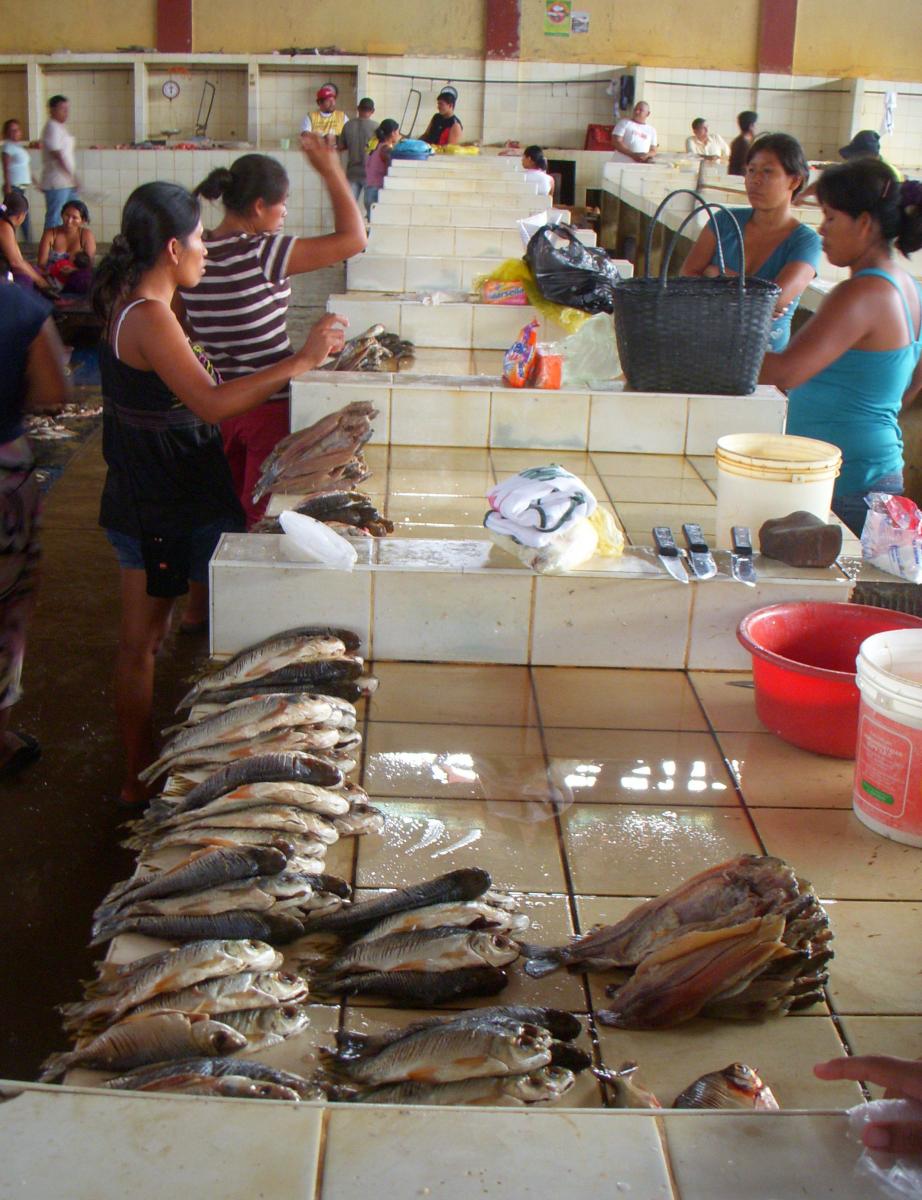Inland fisheries determined to surface as food powerhouse
Add Summary

No longer satisfied to be washed out by epic seas and vast oceans, the world’s lakes, rivers, streams, canals, reservoirs and other land-locked waters continue a push to be recognized – and properly managed – as a global food security powerhouse.
In an article today by Environmental Reviews, authors, which include six who are either currently affiliated with Michigan State University (MSU) and/or are alumni, offers the first global review of the value of inland fish and fisheries.
“Inland capture fisheries and aquaculture are fundamental to food security globally,” said Abigail Lynch, a fisheries research biologist with the U.S. Geological Survey National Climate Change and Wildlife Science Center and an adjunct professor at MSU. “In many areas of the world, these fisheries are a last resort when primary income sources fail due to, for instance, economic shifts, war, natural disasters and water development projects.”
The article shows that although aquaculture and inland capture fisheries contribute more than 40 percent of the world’s reported fish production, excluding shellfish, their harvest is greatly under-reported and value is often ignored.
Inland waters comprise about 0.01 percent of the earth’s water.
Topping the list of the value of inland fish and fisheries is food and economic security. These fisheries provide food for billions of people and livelihoods for millions worldwide.
Inland fisheries, the review showed, support at least 21 million fishers, many of whom live in low-income countries and rely on these fisheries for both subsistence and their livelihood.
countries and rely on these fisheries for both subsistence and their livelihood.
Other important benefits that inland fisheries and aquaculture provide include recreation, cultural and even spiritual values, and their contribution to species’ and ecosystem diversity.
Michigan State has been working with other fisheries experts and advocates globally to push inland fisheries into the spotlight, especially in calling for better data to document inland fisheries’ impact. The trouble, experts note, is that harvest amounts are vastly underestimated, particularly in remote areas and in developing countries. For example, only one-third of countries with inland fisheries submit catch statistics to the United Nations Food and Agricultural Organization.
"Fish always have been representative of how well humans are doing with their environment," said William Taylor, University Distinguished Professor of Global Fisheries Systems in MSU’s Center for Systems Integration and Sustainability (CSIS). "It's time for us to make a move and speak for the fish to have them valued along with power, commercial, agriculture and other competition for water."
The current limitations to valuing the benefits that inland fish and fisheries provide make it difficult to incorporate them into resource planning on a national or global scale, Steve Cooke, second author from Carleton University, noted. “What is of great concern is that more than half of the inland fisheries’ habitat is moderately or highly threatened, so populations may be lost even before they are documented.”
A partnership between MSU and the United Nations Food and Agriculture Organization (FAO) aims to identify opportunities and help develop strategy to bring freshwater fish to the global policy table.
In January 2015, Taylor helped MSU partner with the FAO in Rome for the The Global Conference on Inland Fisheries. That meeting brought 212 people from 45 countries to discuss ways to make fish a competitive part of global development.
In April 2015, MSU joined the FAO to host a panel discussion at the 7th World Water Forum in South Korea.
The study, “The social, economic, and environmental importance of inland fish and fisheries,” was authored by Lynch, Taylor, MSU alumni Andrew Deines, and MSU PhD students Joe Nohner, Betsy Riley and So-Jung Youn in MSU’s CSIS; as well as Cooke, Shannon Bower and Vivian Nguyen from Carleton University in Ottawa, Canada; David Bunnell, Mark Rogers and Whitney Woelmer from the USGS Great Lakes Science Center in Ann Arbor, MI; Douglas Beard Jr. from USGS and Ian Cowx and Kaviphone Phouthavong from Hull University in the U.K.



 Print
Print Email
Email
